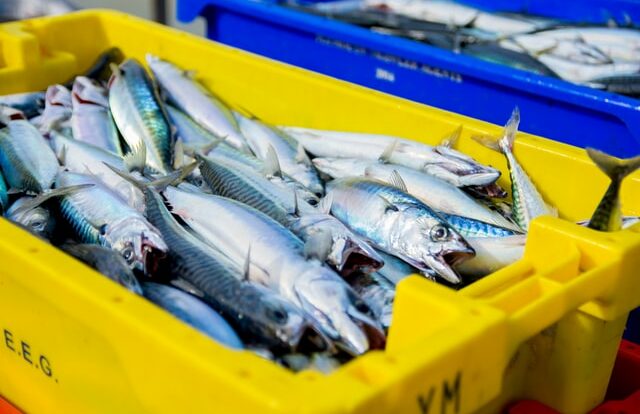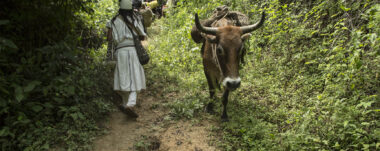Traditional Aquaculture and the Development of Rural Areas in Costa Rica

The year 2022 is an opportunity to make the fishing trade visible, it is the International Year of Artisanal Fisheries and Traditional Aquaculture. Although humanity has been breeding fish for thousands of years, its relevance has been forgotten despite its great importance for food systems, livelihoods, culture, and the environment.
The United Nations proposes the slogan “small scale, big value” to highlight the importance of artisanal fisheries and aquaculture in regards to the environment and social development.
2022 International Year of Artisanal Fisheries and Aquaculture
This international year was created for the purpose of strengthening the social valorization of fishermen so that the families that depend on it have their deserved recognition.
Artisanal fishing and aquaculture have an enormous positive effect in terms of food and the economy. These practices convert lakes or lagoons into areas for the exploitation of natural marine resources. In turn, they contribute to the growth and stability of the food system, conserving aquatic species, and decreasing environmental impact, unlike the industrial model that uses techniques such as trawling, which allows the harvesting of massive catches but captures non-target species.
In Costa Rica
Aquaculture began in the 1960s to promote the socioeconomic development of rural areas. From the early 70’s, the country began to witness the creation of fishing cooperatives and thus, to grow significantly in the early eighties. However, as the years went by, the problems did not cease and Costa Rica did not manage to avoid the effects of the 2008 crisis, where there was a significant contraction of its economic activity and brought consequences on tourism and trade, generating unemployment, migration, and poverty.
Within this framework, new initiatives emerge from the fishing communities themselves. The purpose of these initiatives is to place their economic activities in the national and international market, but at the same time to confront policies and displacements between the economic and political spheres. In other words, they are developing activities that are in balance with the environment and marine resources, through which they ensure their survival.
According to INCOPESCA, Costa Rica is almost totally dominated by freshwater continental aquaculture, where fish farming is specifically tilapia and trout. One is destined for international markets, while the other is very modest and is entirely destined for the domestic market.
Species Used in Traditional Aquaculture in the Country
INCOPESCA has an aquaculture department and two juvenile production centers. Los Diamantes aquaculture station is located in Guápiles, Limón province, Caribbean region, and specializes in the production of juvenile tilapia. The Ojo de Agua trout station is located in Dota, San José province, in the Central Volcanic Mountain Range, and is based on the production of rainbow trout .
Blue and Nile tilapia
Although not native to Costa Rica, these two aquaculture species are very important and widely used in the country. They possess unique qualities, such as accelerated growth, adaptation to captivity and resistance to disease, which produce a quality white meat that is widely accepted in aquaculture and in the world market.
Rainbow trout
Its production is based on imported eggs and comes in different forms that are used for domestic consumption and exports. Trout farming is a complete process that goes along with the stages of development, from fertilization to fattening. It is also widely used for sport fishing, the species having been introduced into many rivers for this purpose.
White Shrimp
Generally produced for local consumption, it is being developed for production and sale as bait in responsible fishing areas. On the other hand, its growth has been limited by the creation of mangrove areas as protected wetlands.
These are the main species that are produced in the country with commercial interest and in a controlled and stable manner, since some can become invasive species.
The need to develop alternatives to reduce unemployment and poverty levels in rural areas is clear. Artisanal fishing has weakened in recent years; therefore, national policies are needed to support the development of this sector and favor the generation of new projects.
In Summary
- Artisanal fishing and aquaculture have an enormous positive impact in terms of food and economics.
- These freshwater practices began in the 1960s with the objective of promoting socio economic development in rural areas.
- The national aquaculture production is mainly composed of three species: tilapia, trout and shrimp.
Bibliography
FAO. 2016. Análisis de la situación actual del sector acuícola en Costa Rica. San José, Costa Rica: FAO, 139 p.
https://www.derechoalimentacion.org/noticias/2022-o-internacional-de-la-pesca-artesanal
https://www.biologia.una.ac.cr/index.php/capacitacion-formacion-academica
https://parquemarino.org/wp-content/uploads/2020/01/AcuiculturaenCostaRica.pdf
https://www.incopesca.go.cr/acuicultura/index.aspx
Autora
Zelda Walters
Previous article Costa Rica: First COP (Conference of States Parties) of the Escazú Agreement (2018)
Navigate articles




